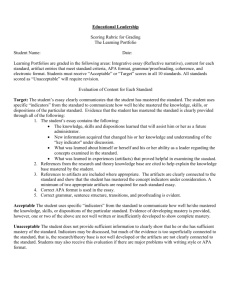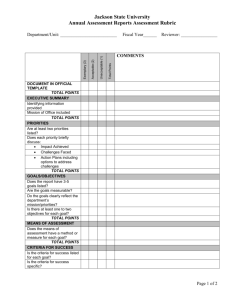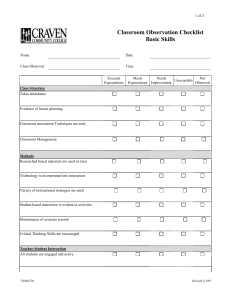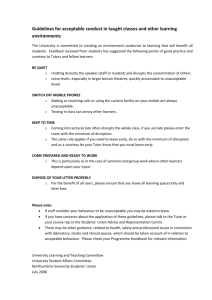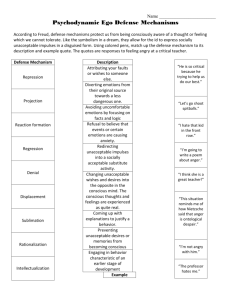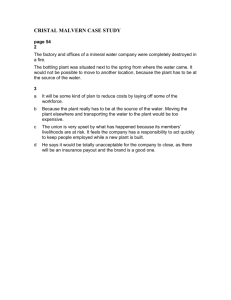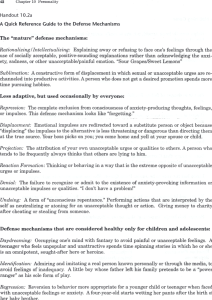Scoring Rubric for Grading The Learning Portfolio
advertisement
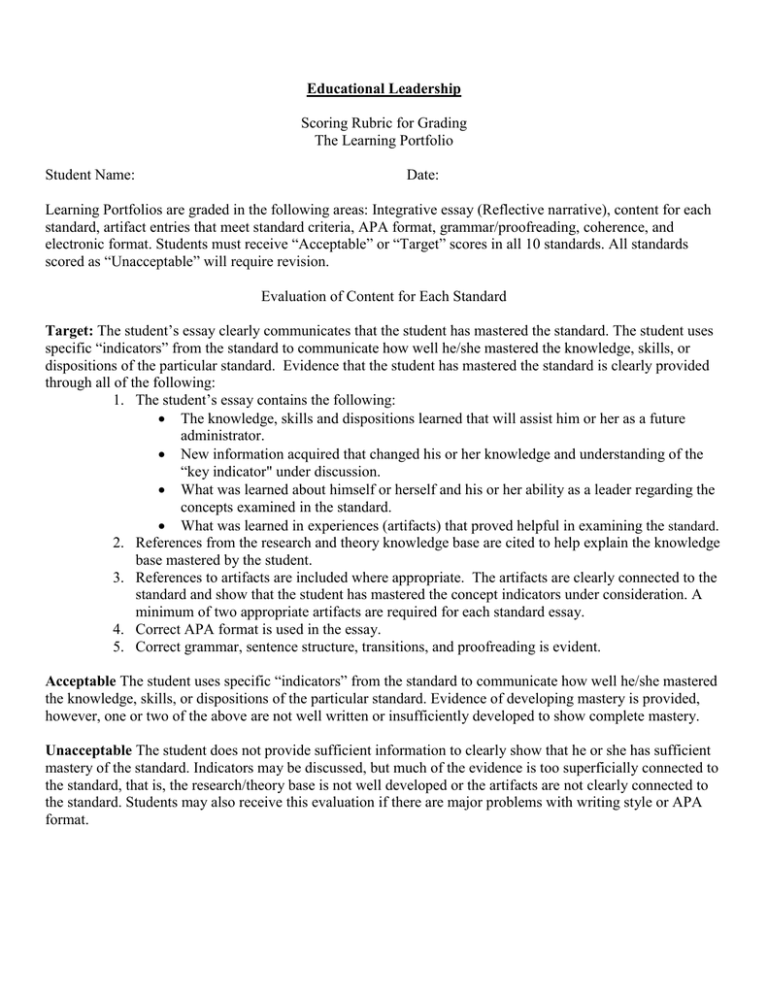
Educational Leadership Scoring Rubric for Grading The Learning Portfolio Student Name: Date: Learning Portfolios are graded in the following areas: Integrative essay (Reflective narrative), content for each standard, artifact entries that meet standard criteria, APA format, grammar/proofreading, coherence, and electronic format. Students must receive “Acceptable” or “Target” scores in all 10 standards. All standards scored as “Unacceptable” will require revision. Evaluation of Content for Each Standard Target: The student’s essay clearly communicates that the student has mastered the standard. The student uses specific “indicators” from the standard to communicate how well he/she mastered the knowledge, skills, or dispositions of the particular standard. Evidence that the student has mastered the standard is clearly provided through all of the following: 1. The student’s essay contains the following: The knowledge, skills and dispositions learned that will assist him or her as a future administrator. New information acquired that changed his or her knowledge and understanding of the “key indicator" under discussion. What was learned about himself or herself and his or her ability as a leader regarding the concepts examined in the standard. What was learned in experiences (artifacts) that proved helpful in examining the standard. 2. References from the research and theory knowledge base are cited to help explain the knowledge base mastered by the student. 3. References to artifacts are included where appropriate. The artifacts are clearly connected to the standard and show that the student has mastered the concept indicators under consideration. A minimum of two appropriate artifacts are required for each standard essay. 4. Correct APA format is used in the essay. 5. Correct grammar, sentence structure, transitions, and proofreading is evident. Acceptable The student uses specific “indicators” from the standard to communicate how well he/she mastered the knowledge, skills, or dispositions of the particular standard. Evidence of developing mastery is provided, however, one or two of the above are not well written or insufficiently developed to show complete mastery. Unacceptable The student does not provide sufficient information to clearly show that he or she has sufficient mastery of the standard. Indicators may be discussed, but much of the evidence is too superficially connected to the standard, that is, the research/theory base is not well developed or the artifacts are not clearly connected to the standard. Students may also receive this evaluation if there are major problems with writing style or APA format. Learning Portfolio Rubric—Page 2 1. Vision – High Performing Leaders have a personal vision for their school and the knowledge, skills, and dispositions to develop, articulate, and implement a shared vision that is supported by the larger organization and the school community. Target Acceptable Unacceptable Comments: 2. Instructional Leadership – High Performing Leaders promote a positive learning culture, provide an effective instructional program, and apply best practices to student learning, especially in the area of reading and other foundational skills. Target Acceptable Unacceptable Comments: 3. Managing the Learning Environment – High Performing Leaders manage the organization, operations, facilities and resources in ways that maximize the use of resources in an instructional organization and promote a safe, efficient, legal, and effective learning environment. Target Acceptable Unacceptable Comments: 4. Community and Stakeholder Partnerships – High Performing Leaders collaborate with families, business, and community members, respond to diverse community interests and needs, work effectively within the larger organization and mobilize community resources. Target Comments: Acceptable Unacceptable Learning Portfolio Rubric—Page 3 5. Decision Making Strategies – High Performing Leaders plan effectively, use critical thinking and problem solving techniques, and collect and analyze data for continuous school improvement. Target Acceptable Unacceptable Comments: 6. Diversity – High Performing Leaders understand, respond to, and influence the personal, political, social, economic, legal, and cultural relationships in the classroom, the school and the local community. Target Acceptable Unacceptable Comments: 7. Technology – High Performing Leaders plan and implement the integration of technological and electronic tools in teaching, learning, management, research, and communication responsibilities. Target Acceptable Unacceptable Comments: 8. Learning, Accountability, and Assessment – High Performing Leaders monitor the success of all students in the learning environment, align the curriculum, instruction, and assessment processes to promote effective student performance, and use a variety of benchmarks, learning expectations, and feedback measures to ensure accountability for all participants engaged in the educational process. Target Comments: Acceptable Unacceptable Learning Portfolio Rubric—Page 4 9. Human Resource Development – High Performing Leaders recruit, select, nurture and, where appropriate, retain effective personnel, develop mentor and partnership programs, and design and implement comprehensive professional growth plans for all staff – paid and volunteer. Target Acceptable Unacceptable Comments: 10. Ethical Leadership – High Performing Leaders act with integrity, fairness, and honesty in an ethical manner. Target Acceptable Comments: General Comments: Portfolio Approved Revisions Required as Follows: Faculty Signature (s): ____________________________________________ Date: __________ ____________________________________________ Date: __________ Unacceptable
